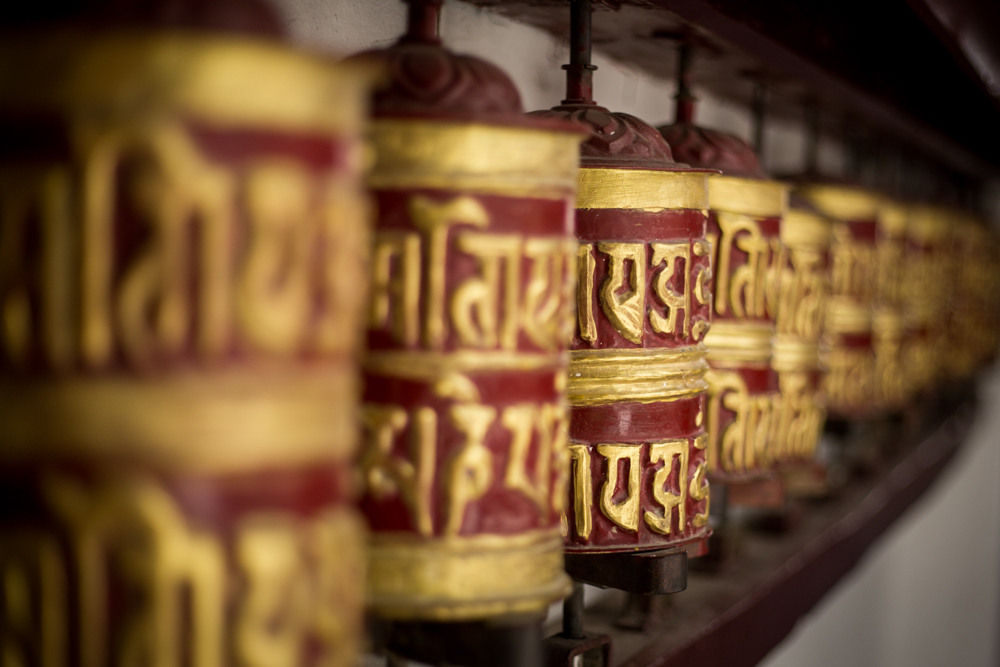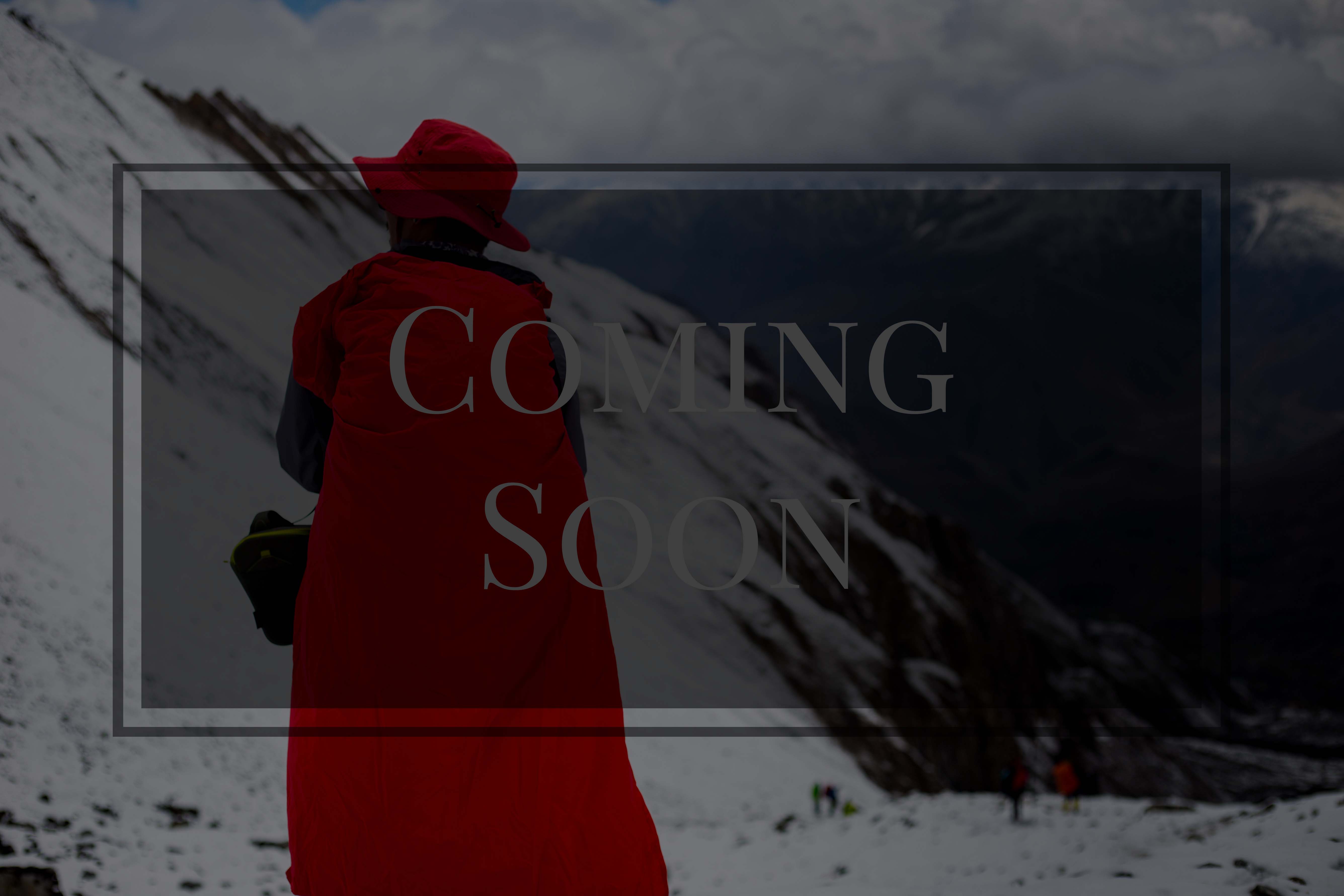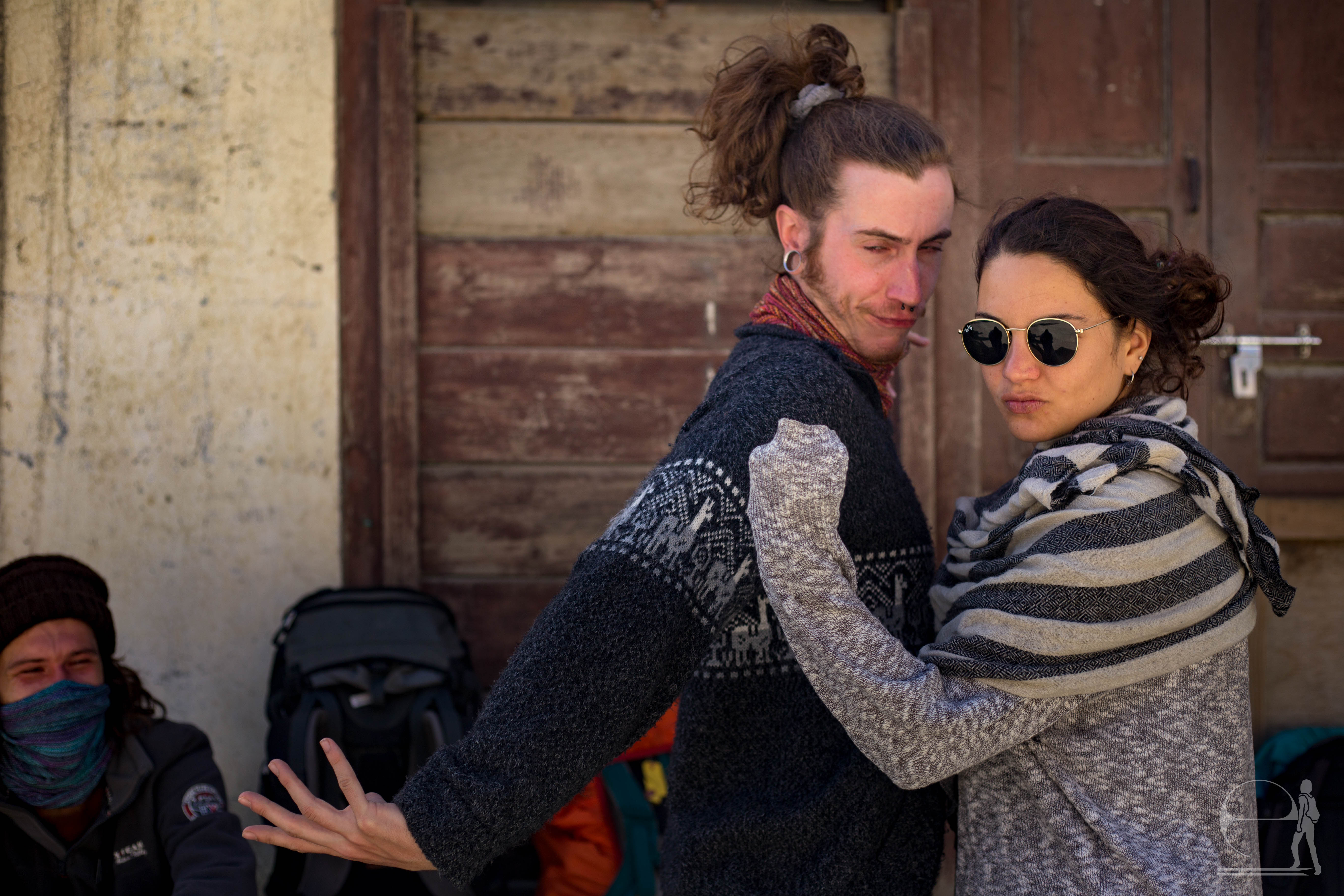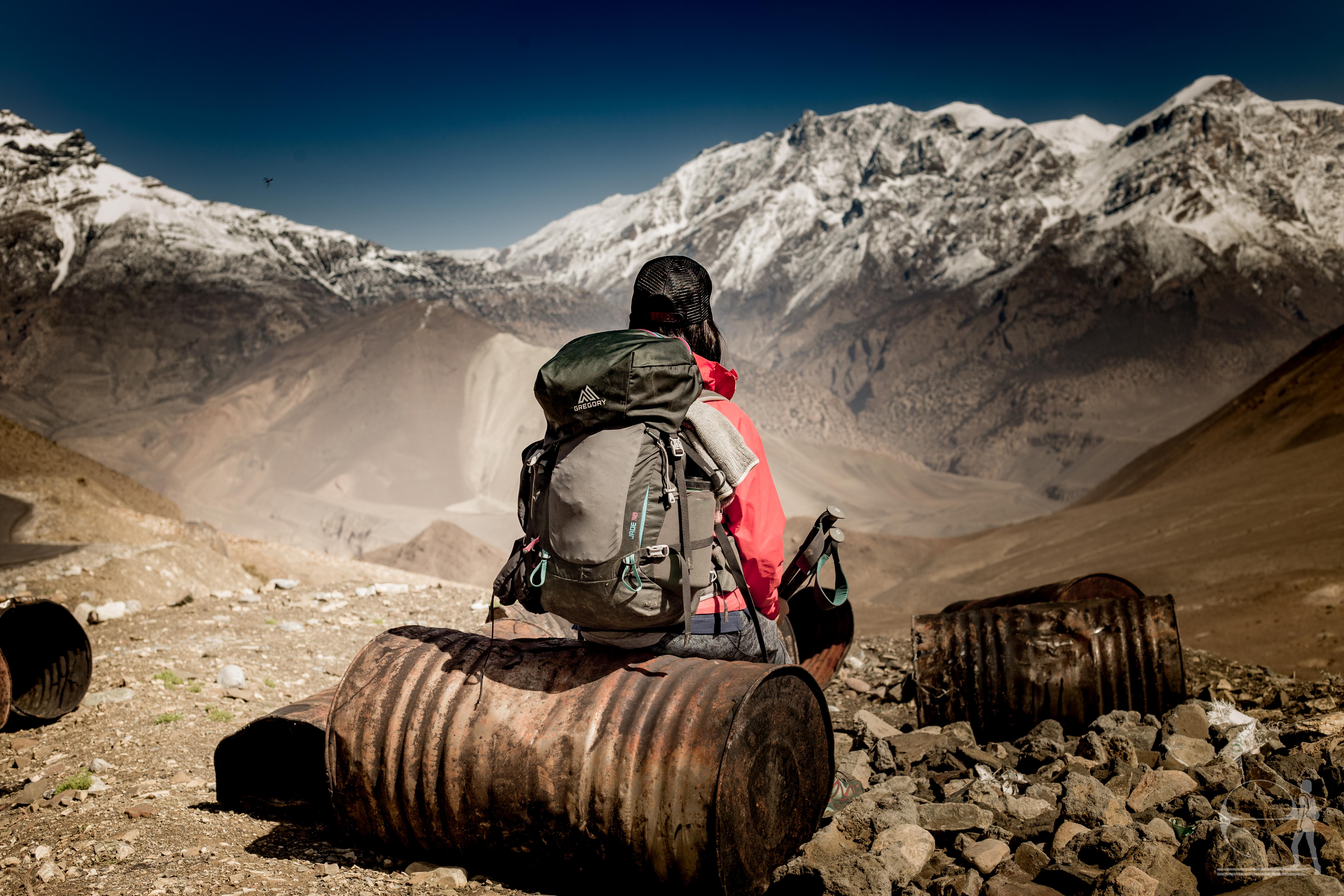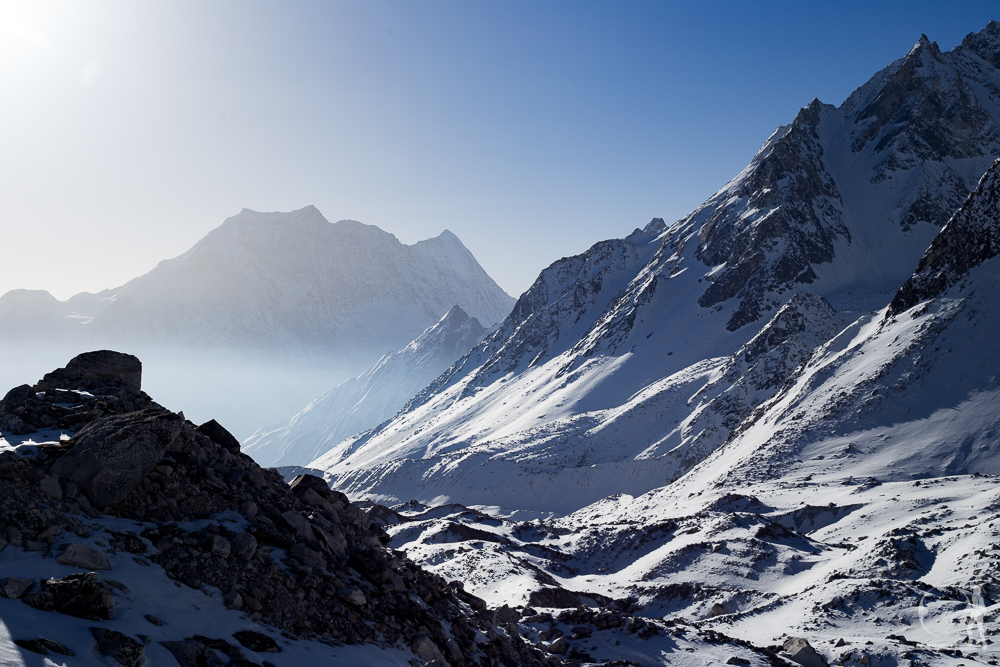/ The Himalayas are Calling
5. I’ve heard trekking is dangerous.

Alright, this one is a legitimate concern.
Trekking is about risk-management not risk-taking.
No matter which trek you pick, you will be in the mountains, and there is inherent danger being in the mountains. But, as every mountain-lover knows: to be in the mountains means taking responsibility for yourself. This means knowing your limits, being adequately prepared, and educating yourself.
However, trekking is not inherently extremely dangerous. As with all outdoors activities, trekking is about risk-management not risk-taking.
Pick a trek which fits your abilities.
Know your limits. Treks vary in the types of terrain they cross. For instance, some are more dangerous as they go over large landslides or down steep icy descents. In general, treks have wide, well-trodden trails over various types of terrain. However, examine the factors which make a trek “difficult” and determine if these factors push you too far out of your skill zone.
For instance, I love walking on scree and over boulders. This means this terrain is “easier” for me, even if it is more difficult for someone else. However, I am less comfortable walking downhill in dust or mud. This terrain is therefore more “difficult” for me.
Be prepared.
The best preventative measure is proper preparation, both in terms of physical training and gear.
I won’t cover physical training, since everyone’s baseline fitness is different. Okay, also because I didn’t train beyond my normal physical activities. However, here are some tips about gear:
Many of the “dangerous” situations I encountered could easily have been prevented if the trekker had been prepared.
- Clothing: Pick your clothing layers based on the weather and temperatures you’re expecting on a trek. Opt for many different layers to keep yourself warm and dry. A rain jacket and insulating layers, like a down jacket or wool, are a good place to start. Here are some layering basics to help you get started!
- Traction: If you are expecting ice or packed snow on your trek, bring microspikes. Microspikes are like snow-chains for your shoes. They turn that long slippery, icy descent after the high pass on your trek into stable, firm trail. Some people complain that microspikes are just dead weight in your bag for the entire trip except that one long downhill day. Trust me, it’s worth it. I’d rather have them and not use them, than not have them and want them. I’ve slipped down enough icy slopes to know that!
- Water purification system: You will need to purify the water before drinking while in Nepal. You can use a chemical or mechanical system. Chemical systems include iodine or chlorine pills which lower the water’s pH to make it inhospitable to bacteria and contaminants. UV filters, like SteriPen, which uses UV light to kill possible harmful bacteria. Mechanical filters, like LifeStraw. use a physical filter to prevent contaminants from entering your body.
Proper preparation means you won’t have to rely on someone else on the trail. Many of the “dangerous” situations I encountered could easily have been prevented if the trekker had been prepared.
For instance, one trekker on the Annapurna circuit walked through snow for an entire day without sunglasses. He then suffered from snow blindness for the next few days. Two other ladies in Mardi Himal were trekking without proper insulating layers. One of them came down with a bad cold.
I’m not exception to this: I did my first trek without adequate gloves. For several days after, I had mild frostbite and my fingertips wouldn’t stop tingling. So take it from experience!
Know when to walk away.
This one’s hard. Let’s say you’ve planned this once-in-a-lifetime adventure. You’ve taken a set number of days off and booked your flights. Unfortunately, you get sick mid-trip. You’re so far, you’re almost there at the top. Just a few more days.
Stop.
One of the hardest lessons is to know when to walk away from a mountain.
The mountains will wait, this is your life. Depending on the nature of your illness, take appropriate actions. Take a rest day if you need. Or, turn back if you have altitude sickness and need to go to a lower elevation. Keep your health and safety in mind, otherwise the trek can become dangerous.
But, this is much easier said than done. One of the hardest lessons to swallow is to know when to walk away from a mountain. On my second trek, I had a fever which came and went. The night before the high point of the trek, the point we’d been walking to for 8 days, my fever flared up.
My fever was not altitude-related, so I did not need to go to a lower elevation. However, I did not know if I could physically walk to the top of the pass the day after. So my guide and I made the call: I’ll go up to the top on a pony and then walk down.
I know, now, it was the right decision. I knew it then too. But even so, I’m still so disappointed in myself. What I have to tell myself, even now, is: the mountain will still be there. You can always go back another time to meet the mountain properly if you’re in good health.
Educate yourself.
Perhaps most importantly, educate yourself about the mountains, your particular trek, and proper gear and preparation.
Here are a few things I’ve learned to help you get started:
And in case you want a more thorough primer, check out Mountaineering: The Freedom of the Hills, 9th Edition.
Verdict: Manage risks to decrease the danger.
Trekking isn’t particularly dangerous, if you are properly prepared. Unlike your beach getaway, this trip requires a bit more planning and legwork. However, if you put in the time, it’s absolutely worth it.
To sum it all up
Trekking in the Himalayas isn’t for everyone, but I believe it can be for you. The first step really is the hardest.

